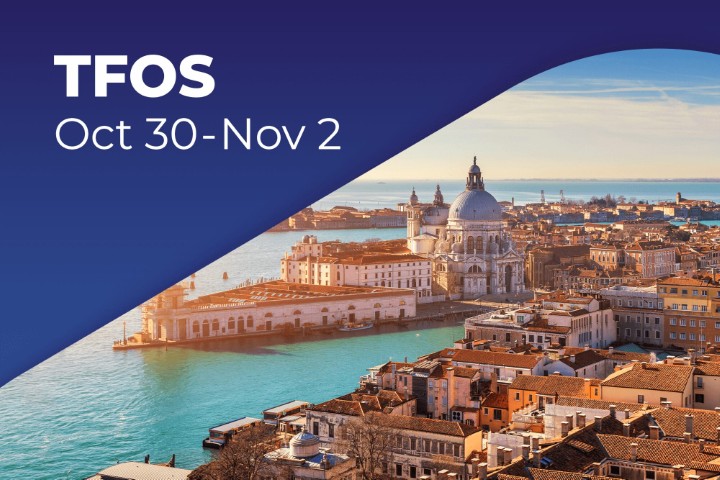TFOS DEWS II and all that’s new with dry eye
Emerging from the buzz of TFOS DEWS II, I’m getting my first chance to step back and take stock of the work that 150 experts in the field have contributed, pro bono, to reach consensus on many aspects of dry eye and deliver a report for use by clinicians, researchers, industry and regulators, to improve patient care and inspire continued advancement of the field. Those close to me have witnessed the magnitude of this undertaking, but now that this impressive body of work is published in the Ocular Surface journal, I hope you’ll agree that the results speak for themselves. Like previous TFOS workshop reports, access is free to all and the individual reports making up the TFOS DEWS II report can be downloaded from:
The Ocular Surface:
http://www.theocularsurfacejournal.com/
or TFOS:
http://www.tearfilm.org/accreports-access_tfos_dews_ii_report/126_126/eng/
If the thought of a 400-page report remains too daunting, you might be interested to hear that there will be a TFOS DEWS II Executive Summary published (also open access) in the next issue of the Ocular Surface journal.
TFOS DEWS II has been an incredible opportunity to increase global recognition of the New Zealand National Eye Centre and our Ocular Surface Laboratory (OSL), with researchers around the world showing increasing interest in the research being conducted somewhere that many had previously considered to be close to ‘the end of the Earth’.
I’d encourage you to read the short articles in this supplement that give a snapshot of the current research interests of many, although by no means all, of the hardworking team at the OSL. However, I would also like to make mention of the rising number of collaborative projects we have underway in various centres around the world.
Further to Ally Xue’s study of dry eye prevalence, diagnosis and treatment in New Zealand, carried out in collaboration with the University of Melbourne, we are extending the study to Canada with TFOS members, Dr Sruthi Srinivasan at the University of Waterloo and A/Prof Etty Bitton at Université de Montréal (where the survey has been translated into French).
Our collaborations with Dr Laura Downie at the University of Melbourne continue, with joint supervision of ex-Auckland optometrist, now Melbourne-based PhD student, Ceecee Zhang. Ceecee began her PhD studies looking at the role of essential fatty acids in corneal nerve structure and function earlier this year, and we look forward to welcoming her to the Laboratory in Auckland for research visits during the course of her studies.
A longstanding collaboration with Aston University in the UK has strengthened in recent years and we have a number of joint dry eye projects underway, which are expected to expand opportunities for publishing peer-reviewed articles and acquiring international research funding. As well as the global epidemiology study described by Joevy Lim (see pX), current projects include evaluation of the Optrex Blink Test by BOptom Honours student, Lexia Ahkit, and a survey-based exploration of the natural history of dry eye by fellow Part V student, Kylie Mann. Further joint research initiatives are planned for 2018 with the University of New South Wales and Harvard Medical School in Boston, USA in two studies that will take very different approaches to the study of contemporary dry eye therapies.
In the meantime, there’s plenty going on at home, too.
Baby shampoo beliefs tackled
Through anecdotal evidence, baby shampoo has been losing favour over the years as an eyelid cleanser, but supportive scientific evidence has been lagging. The OSL decided to address this with a randomised double-masked clinical trial conducted by BMedSc honours student Justin Sung, with clinical input from optometrist and MSc student Sang Hoo Lee. The study uncovered evidence that further supports the clinical move to diminish reliance on baby shampoo in favour of dedicated lid cleansers, a finding that has sparked the interest of the College of Optometrists in the UK, as well as local practitioners.
Artificial tear drug delivery?
Evaluating the full potential of novel therapeutic strategies for dry eye provides exciting research opportunities for PhD students. In a project which bridges the research interests of the Buchanan Ocular Therapeutics Unit, also at Auckland University, and the OSL, Priyanka Agarwal, is currently looking at one of the latest topical formulations with potential applications as an artificial tear product and as a vehicle for drug delivery.
IPL and UVC
There are so many studies underway at the OSL, there are almost always projects actively seeking participants with and without dry eye. So if you’re interested in finding out more, or you have patients who might be interested in contributing to our research efforts, please do get in touch and we will do our best to offer a project to suit.
If I have learned one thing from TFOS DEWS II, it is that great things can be achieved with the collaborative efforts and dedication of very many people. Let’s keep New Zealand on the map by continuing to work towards making a difference for individuals with dry eye!
Associate Professor Jennifer Craig is head of the Ocular Surface Laboratory at the University of Auckland, vice-chair of TFOS Dews II and clinical editor of NZ Optics’ annual ‘Special feature on dry eye’.
























